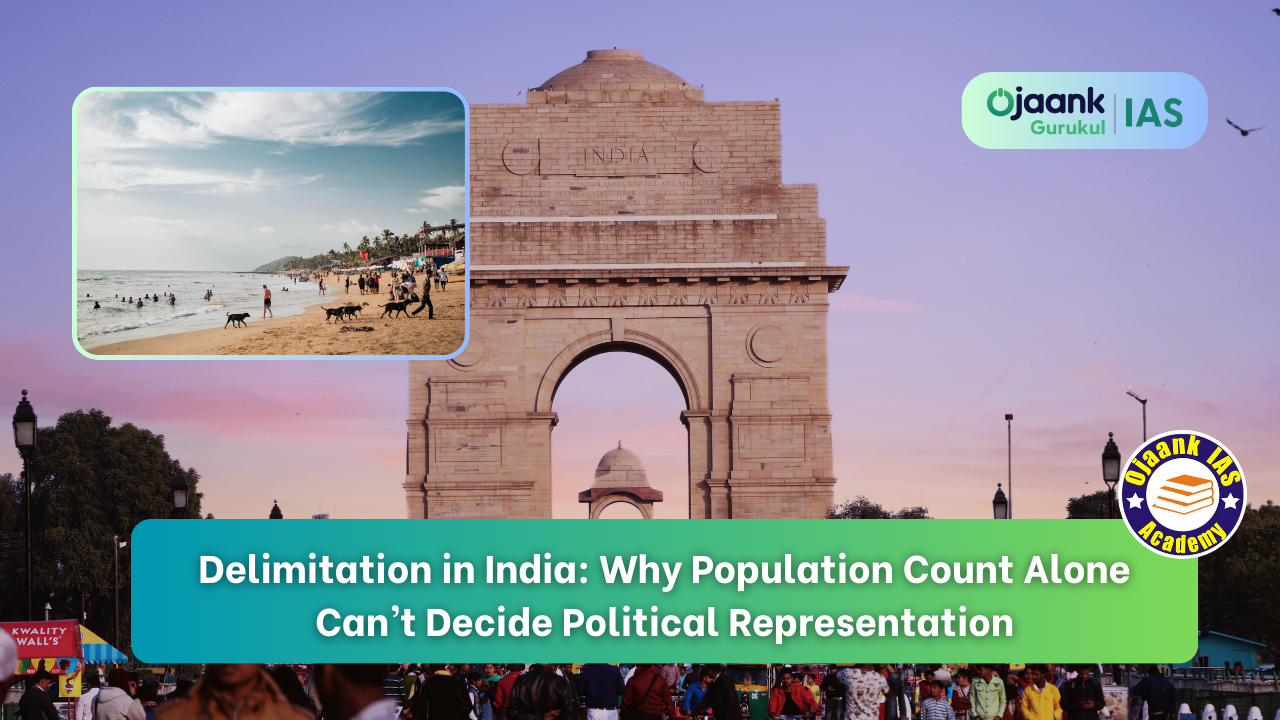Delimitation in India: Why Population Count Alone Can’t Decide Political Representation

Introduction: The End of a Freeze, the Beginning of a Debate
As India nears the expiry of the constitutional freeze on Lok Sabha seat allocation in 2026, the fault lines of representation, federal equity, and demographic justice have begun to deepen. The looming delimitation exercise has triggered serious debate across Parliament and State Assemblies, particularly among the southern states which fear being politically underrepresented despite outperforming their northern counterparts in demographic transitions.
Is population count alone a fair basis to redraw political boundaries and allocate financial resources? The time has come to question this outdated metric and embrace a more inclusive, demographic outlook.
The Historical Context: Growth, Representation, and Freeze
Between 1951 and 1971, India’s Lok Sabha seat count increased in response to population growth. The ratio rose from 7.3 lakh people per seat in 1951 to 10.1 lakh in 1971, culminating in the current total of 543 seats.
However, with the freeze on delimitation extended till 2026, population growth has outpaced parliamentary expansion. Based on projected figures for 2026, India should ideally have 753 Lok Sabha seats, with an average of 20 lakh people per constituency.
But this isn’t just about numbers—it’s about who gets represented and how equitably.
🌐 Why India’s Lok Sabha Seat Count Has Been Frozen Since 1976
Learn More: The History and Future of Parliamentary Seat Allocation in India.
The North-South Divide: More Than Demographics
Northern states like Uttar Pradesh, Bihar, and Madhya Pradesh continue to post higher population growth rates, while southern states like Tamil Nadu, Kerala, and Karnataka have managed to control their population effectively through robust public health and education policies.
In a model driven solely by raw population count, these demographic achievers stand to lose representation—a paradox that punishes success and rewards inefficiency.
This contradiction sparked concern during the 15th Finance Commission, where the use of 2011 Census data (instead of 1971) to calculate financial devolution was hotly contested. The Commission ultimately added demographic performance as a compensatory metric, balancing representation between high-population and high-performance states.
🌐 The Unequal Impact of Delimitation on Northern and Southern States
Explore: How Population Growth Affects Representation in India’s Federal System.
Time for a Paradigm Shift: Population Can’t Be the Only Metric
It’s tempting—and dangerously simplistic—to assume that representation must scale with headcount. But such reasoning ignores vital indicators like:
-
Population Density
-
Demographic Transition
-
Urban vs Rural Spread
-
Health and Education Outcomes
-
Infrastructure Capacity
Currently, the Northeast enjoys a unique precedent, with fewer people per seat due to difficult terrain and lower accessibility. Shouldn’t this principle of contextual representation apply across the board?
Adopting population density as a guiding factor could serve as a more equitable middle path. For example, a district with high density and low population may warrant equal or greater attention than a sparsely populated but larger region. Representation, after all, isn’t just about volume—it’s about voice and vulnerability.
🌐 How Demographic Performance Should Influence Seat Allocation
Explore: Recognizing States for Better Outcomes in Education, Healthcare, and Population Control.
The Per Capita Hangover: A Flawed Legacy
One of the most harmful habits in governance is the over-reliance on per capita measures—GDP per capita, health spend per capita, education per capita. These ratios ignore who the people are, and what they need.
This “per capita hangover” becomes even more problematic in the context of the Sustainable Development Goals (SDGs), where comparisons are made indiscriminately, flattening the differences between vastly unequal populations.
A simple headcount in the denominator assumes all individuals have equal needs and capacities—a fallacy that fails both science and justice.
🌐 Balancing Representation and Regional Equity in Indian Democracy
Read More: Why Electoral Redistribution Must Consider Socioeconomic and Geographic Factors.
The Need for Demographic Wisdom
Demographic reading isn’t just about counting people. It’s about understanding:
-
Age structures
-
Gender compositions
-
Caste and community segmentation
-
Economic dependency ratios
-
Access to public services
By factoring in these attributes, we move from a gross count to a meaningful metric—one that honors diversity, inequality, and lived experience.
This becomes especially important in reserved constituencies, where caste and gender considerations already influence political allocation. A one-size-fits-all approach can severely distort representational equity in such contexts.
🌐 The Role of Caste, Gender, and Socioeconomic Factors in Representation
Read More: How Social and Economic Indicators Should Influence Electoral Distribution.
Rethinking Representation: A Multi-Dimensional Approach
Here’s how India can think beyond raw population in the upcoming delimitation exercise:
-
Set a Cap on Average Representation: Ensure that each constituency does not exceed a manageable population size, ideally below 20 lakhs.
-
Use Population Density: Apply the Northeast precedent more broadly to accommodate geographic and infrastructural realities.
-
Incorporate Demographic Performance: Recognize states with better outcomes in population control, education, and healthcare.
-
Weigh Composition Over Count: Design allocations based on age, gender, caste, and economic composition—not just volume.
-
Link with Federal Equity: Ensure that representation decisions uphold the federal character of the Constitution, avoiding any dominance by specific regions.
Conclusion: From Delimitation to Democratization
The 2026 delimitation isn’t just a bureaucratic exercise—it’s a test of India’s commitment to equitable governance. If representation is skewed by sheer numbers, we risk deepening regional divides and undermining the very principles of federalism.
As our nation evolves, so must our frameworks. Let’s move from headcounts to human realities. Let’s choose demographic wisdom over numerical rigidity. And let’s ensure that political representation in the world’s largest democracy is not just large in number, but just in spirit.
Let population serve as a guide—not a governor—of representation. The future of Indian federalism depends on it.
/////////////////